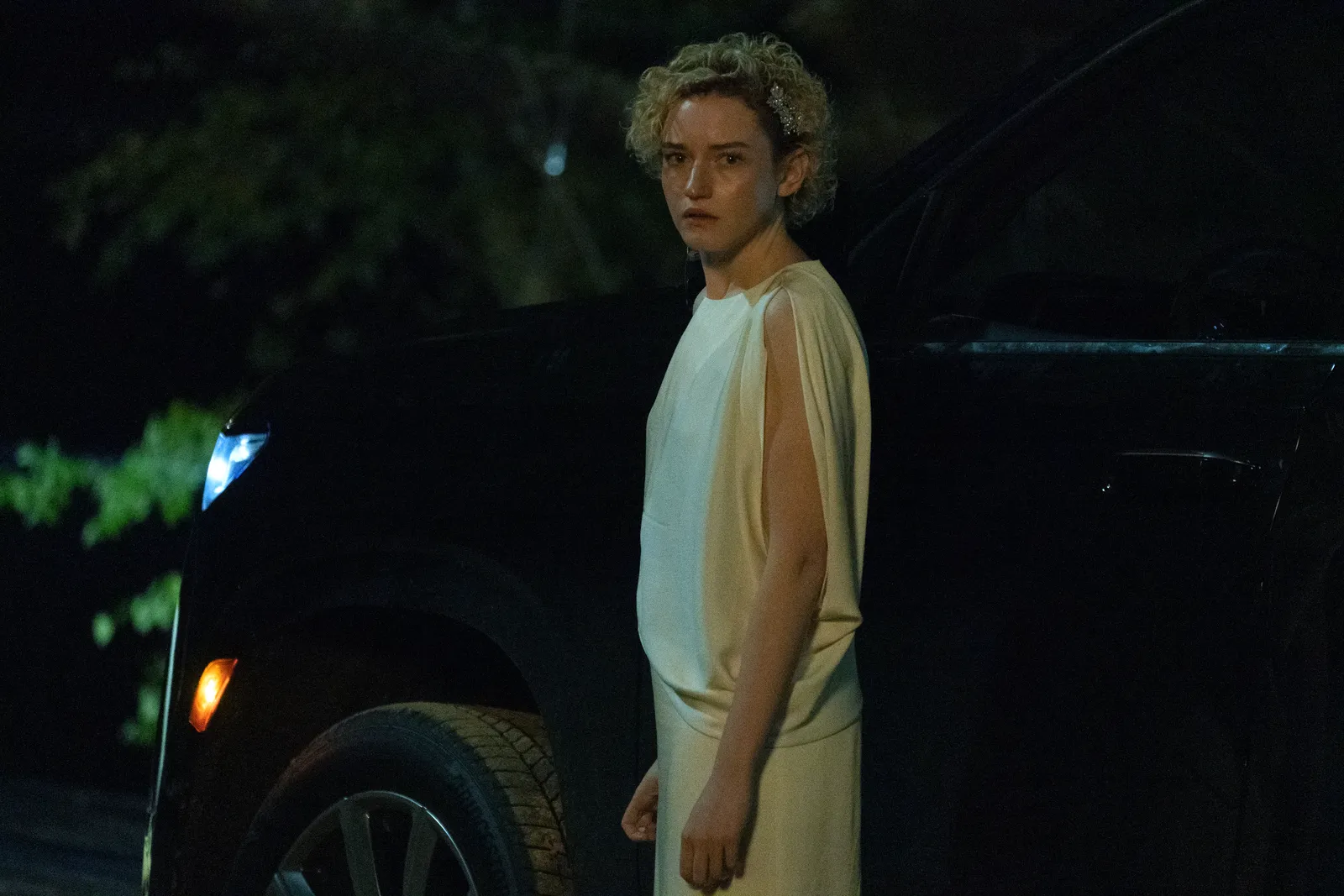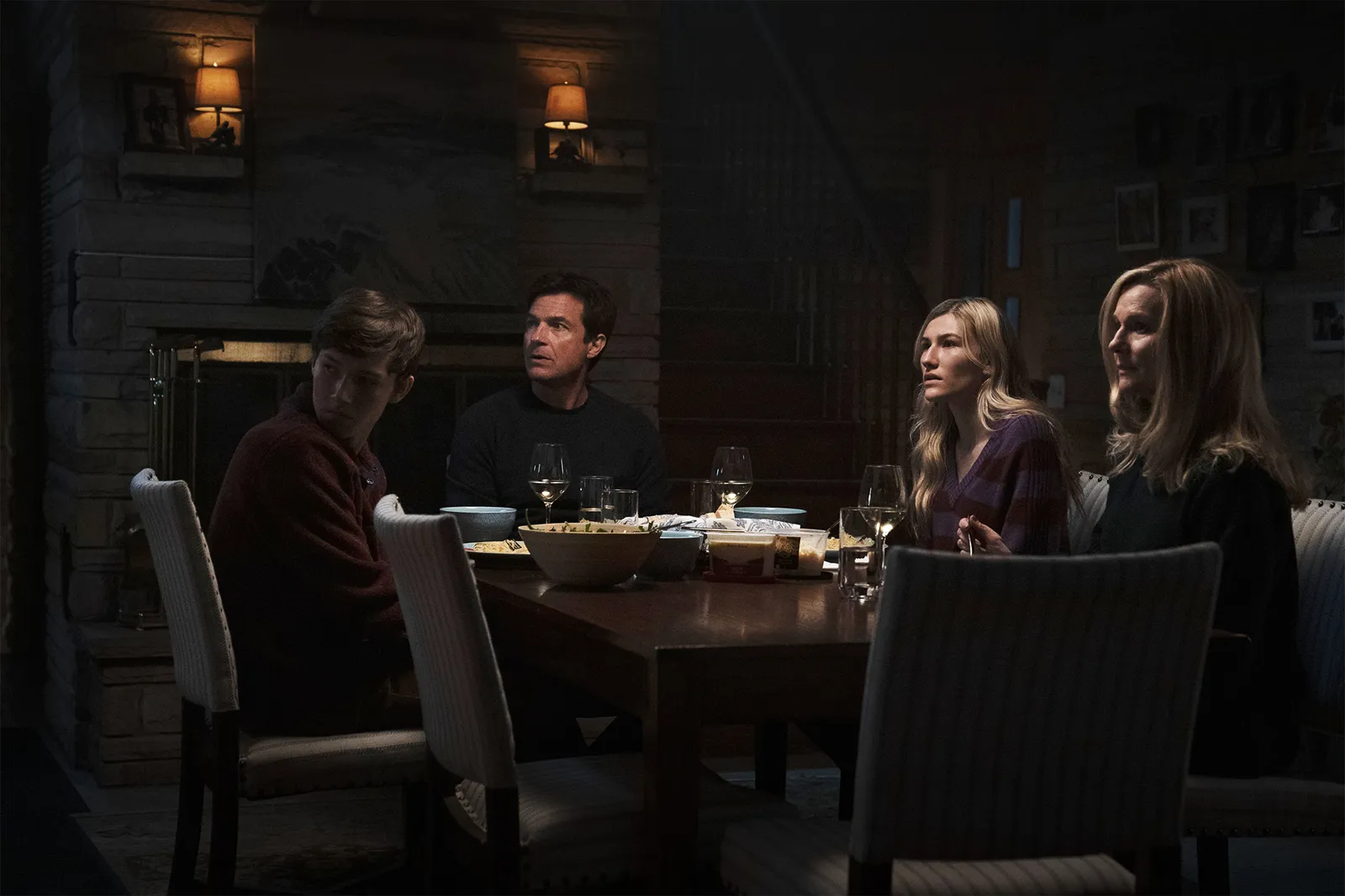As Jason Bateman’s Marty Byrde once ominously said in Ozark, “People make choices. Choices have consequences.” This ethos ran through every crooked deal, every desperate cover-up, and ultimately, through the explosive finale, “A Hard Way to Go.” After four seasons of laundering money, evading death, and manipulating those around them, the Byrdes made it out alive—but at what cost?
In an exclusive conversation with Vanity Fair, showrunner Chris Mundy, along with cast members Jason Bateman, Laura Linney, and Julia Garner, opened up about the show’s emotional ending, its darkest turns, and what lies beyond for its complex characters. Here’s a comprehensive breakdown of how the critically acclaimed series came to its haunting end.
Ruth Langmore’s Final Stand
The Writers’ Debate Over Ruth’s Fate
Chris Mundy revealed that Ruth Langmore’s death wasn’t a foregone conclusion when the writers first tackled the final season. In fact, there was initially hope she might survive. But as the story progressed, keeping her alive started to feel disingenuous.
“We felt like there were no repercussions from anything,” Mundy said. “It felt too clean to have everybody get a damaged but happy ending—it felt like a fairy-tale ending to something that we were trying to make not a fairy-tale.”
A Self-Propelled Death
What made Ruth’s ending feel earned, according to Mundy, was the fact that she chose her path. After Javi (Alfonso Herrera) killed her cousin Wyatt, Ruth’s decision to avenge him—despite knowing the potential consequences—sealed her fate.
“Ruth could go for revenge or not,” Mundy said. “She knows if she did, it is going to unleash things that might end up with her getting harmed.”
Julia Garner’s Foreboding Vision
Before being told about Ruth’s death, Julia Garner sensed it. She described having an intuitive moment during character prep, where Ruth’s internal fear surfaced.
“One of the questions was, What are you afraid of at the moment? Her response was, she’s afraid to die,” Garner recalled. Moments later, Mundy called and confirmed her character’s fate.
Though Ruth appears to be catching a few breaks in the final episodes—like having her criminal record expunged—Garner believes Ruth was already spiritually dead after Wyatt’s murder. “If she got hit by a car, she wouldn’t care. If there was a gun being pointed at her, she wouldn’t care,” she said.
The Final Shot and Garner’s Goodbye
Ruth is ultimately shot by Javi’s mother, Camila, in a quietly devastating scene. It was also the last scene filmed for the series, making it an emotional farewell.
Garner recalled, “It meant a lot to me that Jason was directing it… It was a hard day, but a beautiful day.”
Bateman, who directed both the premiere and the finale, explained the intention behind how Ruth dies—on her feet, literally and  phorically. “Ruth ends her life standing her ground and going out on her terms,” he said.
phorically. “Ruth ends her life standing her ground and going out on her terms,” he said.
Marty and Wendy: Love or Co-Dependency?
A Relationship Bound by Chaos
From day one, Ozark has always been about family. But as Wendy (Laura Linney) grew more ruthless and unhinged, some viewers wondered if Marty would finally walk away. Yet by the finale, the couple remains united.
“They love each other, but they’re also the only two people who have lived through this,” said Mundy. “How can they have a normal relationship with anybody else?”
The Breaking Point That Didn’t Break Them
In episode nine of the final season, Wendy lays it out bluntly to Marty: “If you love me, you’ll keep going.” Marty agrees—and in doing so, chooses to remain within the morally bankrupt world they’ve built together.
The show re-centers their bond with two pivotal moments: the return of Wendy’s abusive father, and Wendy’s breakdown and voluntary check-in at a mental hospital. These served as emotional crossroads for both spouses.
“It makes Marty really look at who Wendy is and where she came from,” Mundy explained. “You decide what you want. Do you want to be a family unit or not?”
Laura Linney on Wendy’s Reckless Drive
Linney relished playing Wendy, who evolved into one of television’s most manipulative and chaotic characters.
“There’s an impulsive quality to her—an unedited version of her—which is really fun to play,” Linney said. “Over the course of the series, they get to know not only who they are individually, but who they are as a family.”
Jonah’s Shot: The Final Twist
The Return of Mel
Just when the Byrdes think they’ve navigated their final hurdle, Mel (Adam Rothenberg), the persistent private investigator, reappears. Holding the cookie jar containing Ben’s ashes, Mel threatens to expose everything.
“You don’t get to win,” Mel declares. “You don’t get to be the Kochs or the Kennedys.”
It’s a scathing indictment of the Byrdes’ ambition—and the system that allows people like them to thrive despite their crimes.
Jonah’s Transformation
Jonah’s arc comes full circle in the show’s final moment. In season one, he pulls an unloaded gun on a cartel associate. In the finale, he does it again—but this time, the gun is loaded.
As the screen cuts to black and a gunshot rings out, it’s strongly implied that Jonah kills Mel, closing the loop and bringing the family’s story to a bloody resolution.
Mundy says Jonah was chosen to take that shot because he was the last to fall in line with the family’s criminal ways. “The family [is] being brought back together through this act of violence.”
Myth-Making and the Kennedy Parallel
The final confrontation ties back to a conversation in season two, when Wendy and Marty fantasized about escaping to Hyannis Port. Marty joked, “What, you think we’re the Kennedys now?”
That reference returns in Mel’s monologue as he accuses them of chasing legacy, wealth, and political influence in a way that parallels America’s most mythologized family—rumored to have built its empire through bootlegging.
Mundy said, “We layered in that myth-making, so it was nice to be able to answer it back at the very, very end.”
What Comes Next for the Byrdes?
Bateman on the Byrdes’ Future
Though Ozark ends with the Byrdes seemingly victorious, Bateman doesn’t believe they’ve found peace.
“They’ll go up to Chicago and test this theory of Wendy’s,” he said. “They think they’ve acquired enough political capital to do good—but I still feel like their hubris will trip them up. I don’t think they’re there yet.”
He acknowledges that the ends might justify the means in Wendy’s mind, but says, “Their arrogance continues to blind them.”
Mundy’s Final Take
Mundy agrees, albeit more bluntly: “They got everything they think they wanted. But I think they’re dragging around a curse, to be honest.”
Their survival, the family unity, and their new-found power are all tainted by the trail of bodies left behind—Ben, Ruth, Wyatt, Helen, and many more. And though they made it out of the Ozarks, they didn’t leave unscarred.
Conclusion: No Fairy Tales in the Ozarks
In the world of Ozark, survival doesn’t equal redemption. The Byrdes win—but it’s a pyrrhic victory. Their hands are bloodied, their souls compromised, and their futures uncertain. Ruth Langmore, the dreamer who wanted to escape poverty and trauma, dies for standing up. The Byrdes, who embraced corruption and power, walk away richer and seemingly stronger.
It’s a finale that doesn’t offer catharsis, but instead provokes. As Chris Mundy intended, it forces viewers to sit with the consequences of each character’s choices—and to question whether winning at all costs is really winning.
Because in Ozark, every choice has a price. And sometimes, the ones who walk away are the most cursed of all.
Would you like a version of this article formatted for publication or blog upload?
- Man City drop Jack Grealish transfer hint as they launch stunning new kit for Club World Cup - June 5, 2025
- Madison Beer Shares Cheeky Bath Photo in Oscars Party Post - June 5, 2025
- Willow Name Meaning - June 5, 2025







